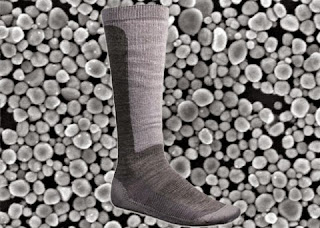For my last event I decided to travel to the Louise M.
Darling Biomedical Library, located on the UCLA campus. I have been to this
building many times before, however I have never been here through the lens of
this class, with the artsci thinking cap on. As you first walk into the library
there is a very beautiful shrubbery arrangement on your left (as depicted
below).
Figure 1: The Entrance to the biomedical library
This right away set the tone of the library to be that of a
welcoming one. The term library is often associated with works of philosophy,
poetry or literature, however this specific library holds much information on
the biomedical field. In this vail of shrubbery there lies a statue.
Figure 2: Model with a truss by Harold Pastorius
This sculpture provides an interesting perspective, but it
is fitting for the biomedical library, as it provides a combination of
something engineering related (a truss) with the artistic expression that is
often found in most sculptures. This sculpture provides a very interesting
gateway into the library portion of the building. Unfortunately with finals
seasons upon us, I was unable to take any pictures inside of the bio-medical
library. In a brief description of it however, I noticed many interesting
aspects of its interior. For one, despite the outside’s appearance, the inside
was very modern, with slim curvy features and bright colors. Additionally, the
stacks were not the defining feature of this library, as is often found in
other libraries on campus. But rather the space was mostly allocated to student
study areas. My overall impression of the library was that it provided a good
conduit for a blend of arts found in the library with bio-medical science.
Figure 3: A selfie of me in front of the biomedical
library entrance


















.jpg)

.jpg)


